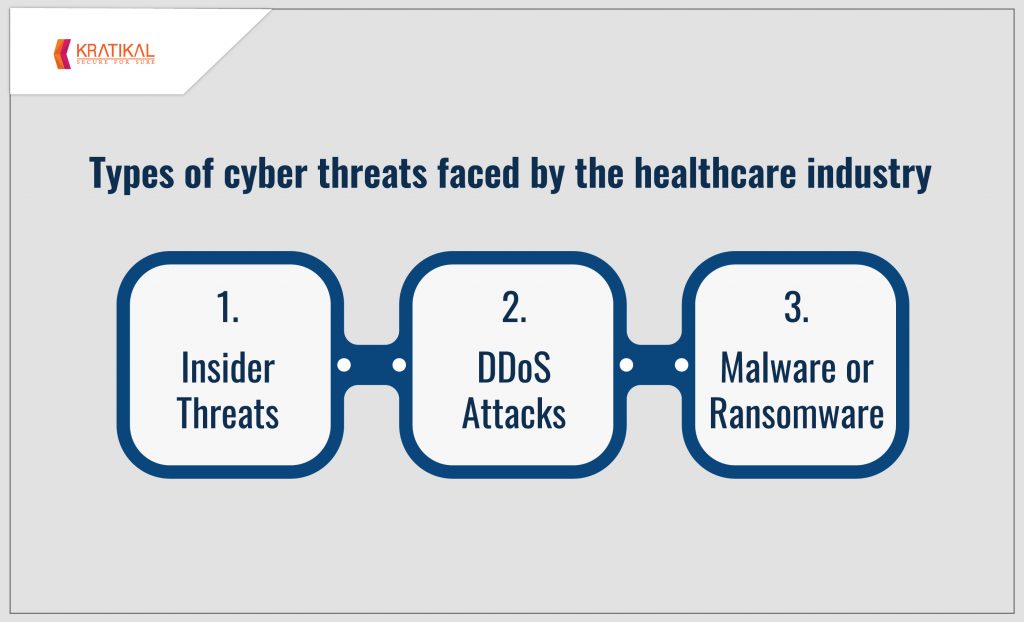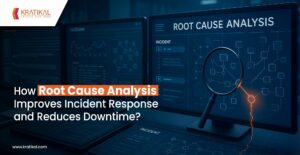The cyber threat to the healthcare industry has increased dramatically in recent years. This new era of digitization has brought numerous benefits, but the more complex medical device automation develops, the more vulnerable they become to cyber-attacks. Thus cybersecurity in healthcare is highly recommended.
Healthcare organizations are of particular interest to the threat actors for a few reasons:
- Private patient data is worth a lot of money to hackers.
- IoT medical devices are easy to tamper with.
- The hospital personnel are not prepared for the online risks.
- The outdated technology used in hospitals puts the infrastructure at risk.
Table of Contents
Cyber Security in Healthcare Sector – The Issues
Whether large or small, healthcare businesses are a prime target for cybercriminals. The healthcare industry is particularly appealing to cybercriminals due to its possession of valuable private data. They store valuable information like medical records, credit or debit card details, social security numbers, and so on. Stolen health records might fetch ten times the price of any other type of data on the black market.
The healthcare industry faces a variety of issues, most of which are specific to it. They are in charge of safeguarding their patients’ medical and financial information, and with the rise in the number of IoT medical devices over the last decade, healthcare has encountered numerous issues that other industries have not. Medical equipment that is web-enabled is frequently required to keep a patient alive. Disabling or tampering with their functionality may endanger the patient’s life.
Cybersecurity in Healthcare Industry – Facts and Figures
The cost of a breach in the healthcare industry is almost three times more than in any other industry. Healthcare data breaches usually go unnoticed for 213 days, which is longer than the 194-day average in other industries. says IBM and Ponemon Institute Report.
In 2024, the global average cost of a data breach hit a record $4.45 million, up 15% over three years, driven by lost business and response costs. The U.S. saw the highest average at $9.48 million, with the healthcare sector leading at $10.93 million.
Types of Cyber Threats Faced by the Healthcare Industry
- Data Breach: The most common and most dangerous are data breaches that are widely observed in the healthcare industry. These breaches can occur due to different factors, including malware or ransomware attacks, insider threats, DDoS attacks, or just simply due to human error. Healthcare data breaches occur when healthcare providers fail to implement appropriate security measures.
- Insider Threats: Organizations are so keen on protecting their IT infrastructure from external attacks that they forget the danger lurking in the shadows of their organization–the insiders. An insider poses a huge risk due to their access to the internal networks. They may also possess knowledge of the network setup and the vulnerabilities better than anyone on the outside. The insider threat ranges from an oblivious employee clicking on a malicious link unknowingly to an employee with malicious intent giving away access codes or selling personal patient information purposely.
- DDoS Attacks: DDoS (Distributed Denial-of-Service) attacks are designed to take down networks and applications. DDoS attacks use botnets (groups of servers) to launch attacks for a variety of reasons, including extortion, data extraction, and malware infection. These assaults can be used to divert IT security personnel’s attention away from a significant data breach. It may result in the loss of a patient’s data in the worst-case situation.
- Malware or Ransomware: The most significant threats in the healthcare industry are ransomware or malware attacks. Ransomware is a cyberattack in which criminals encrypt valuable data, hold it hostage, and demand a ransom to decrypt it.

Why Cybersecurity in Healthcare Important?
We have been able to better prepare for future cyber-attacks as a result of the improvement of cyber security measures, but there is still a problem since the more sophisticated measures we take to defend our infrastructure, the smarter the cyber-attacks become.
Nonetheless, there are some steps that may be taken to protect the security of medical devices and hospital networks:
- Raising awareness and educating healthcare personnel about online risks can be a big help.
- Using strong passwords and two-factor authentication to protect medical devices from unauthorized access.
- Updating your equipment to the newest version so the previous vulnerabilities and threat factors can be eliminated.
- Implementing a good antivirus to rid the equipment of worms and viruses.
- Securing your communication with other devices to ensure your healthy devices aren’t corrupted by the infected ones.
The vulnerabilities in an organization’s infrastructure are the primary cause of every hack. Performing Vulnerability Assessment and Penetration Testing (VAPT) on a regular basis can help to prepare all networks and devices for the inevitable cyber threats by identifying and eliminating the vulnerabilities present in them.
Book Your Free Cybersecurity Consultation Today!
How Can Kratikal Help?
Kratikal is a CERT-In empanelled cybersecurity auditor, providing leading-edge cybersecurity products and services. We offer a complete suite of VAPT testing services to ensure your infrastructure security, including:
- Web Application Testing
Application Security Testing helps you detect vulnerabilities present in your web applications to reduce the risk of possible exploitation.
- Network Security Testing
Infrastructure Penetration Testing is a method of evaluating the state of security of the internal network. It detects the vulnerabilities present in networks, network devices, systems, and hosts so they can be corrected before a hacker can discover and exploit them.
- IoT Devices Security Testing
The IoT devices connected to technology are forever at risk of exploitation and manipulation. IoT Security Testing is done to make sure the hackers do not take advantage of the vulnerabilities present in these networks.
- Cyber Security Assessment and Pen Testing for Medical Devices
Vulnerabilities in medical devices put patients and people who require healthcare in danger. This assessment tries to find exploitable vulnerabilities in these devices so that they may be secured against assaults, potentially saving not only the organization’s infrastructure but also people’s lives.
Along with these, there are also Cloud Security Testing and Secure Code Review offered in Kratikal’s VAPT testing suite. Moreover, healthcare organizations can automate the security of their web, mobile, cloud inventories through AutoSecT. It is an AI-driven VMDR and pentest tool known for its insightful vigilance and proactive defense.
Get in!
Join our weekly newsletter and stay updated
Let’s Protect Healthcare Industry
Because cyber attacks will never be completely eradicated, all we can do is prepare ourselves, our networks, and our devices to face them head-on. Because it is responsible for the lives and data of millions of people, the healthcare business is in desperate need of proper cybersecurity protection. By putting these procedures in place and preventing irresponsible human errors, they will be better able to combat future cyber threats.
Isn’t the health of the healthcare business just as important? What can be done to improve cyber security in healthcaree industry? It’s time to act. Cybersecurity like Kratikal do all the thinking, you just need to follow!
FAQs
- Why is cybersecurity in the healthcare industry more important now than ever before?
The healthcare industry is increasingly targeted by hackers due to its valuable data and vulnerable infrastructure. With the rise of IoT medical devices, digital patient records, and outdated systems, the industry faces unprecedented cybersecurity risks. Cybersecurity in healthcare is more crucial now than ever to prevent data breaches, protect patient safety, and ensure the continuity of critical medical services.
- What are the main cybersecurity challenges faced by the healthcare industry?
The cybersecurity challenges in the healthcare industry include data breaches, insider threats, ransomware attacks, and DDoS incidents. Healthcare organizations often use outdated technology and lack proper cybersecurity training for their personnel. Additionally, the increasing number of connected medical devices creates more entry points for hackers.









Leave a comment
Your email address will not be published. Required fields are marked *